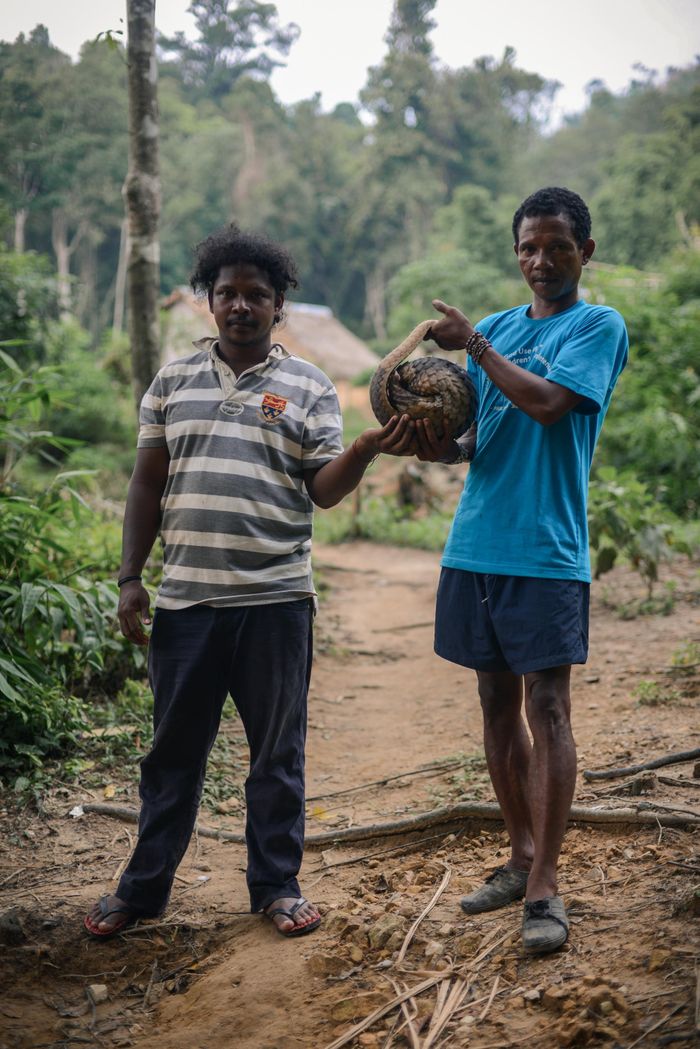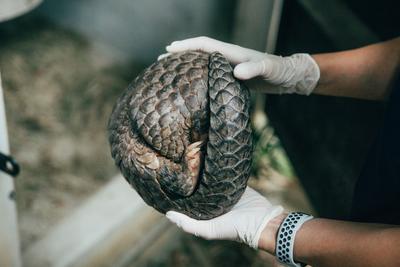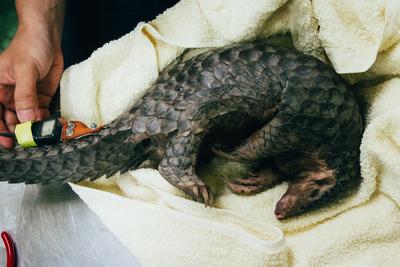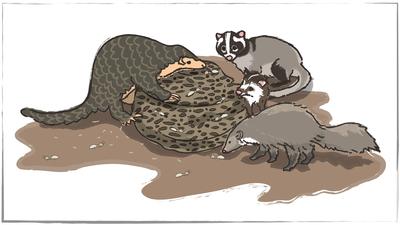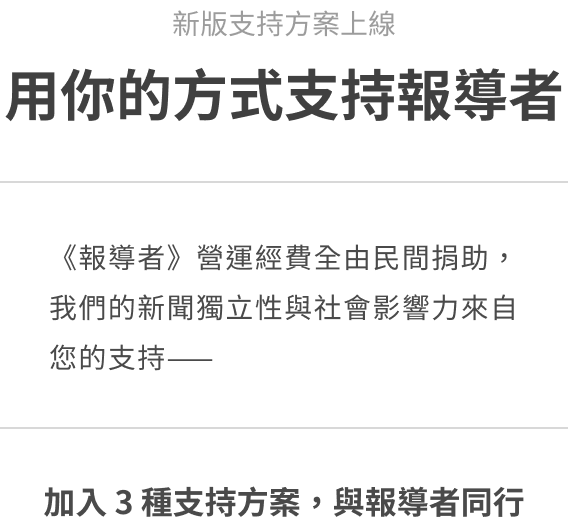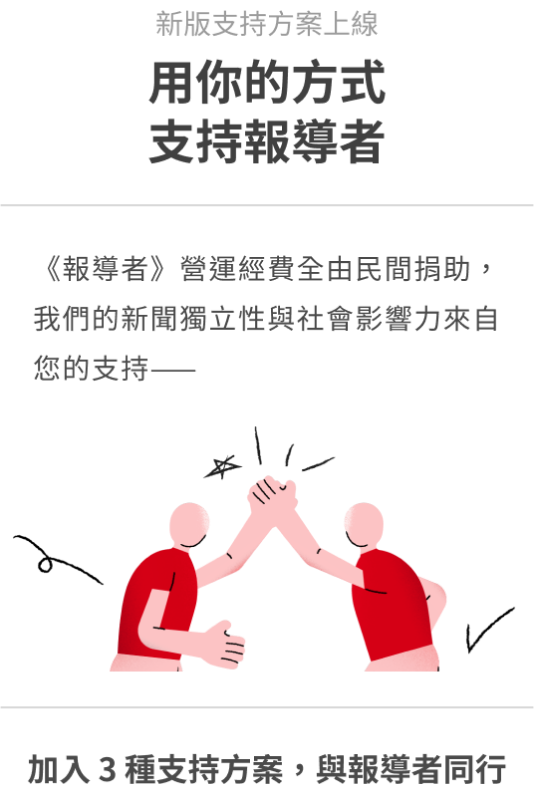The Pangolin Reports: Trafficked to Extinction
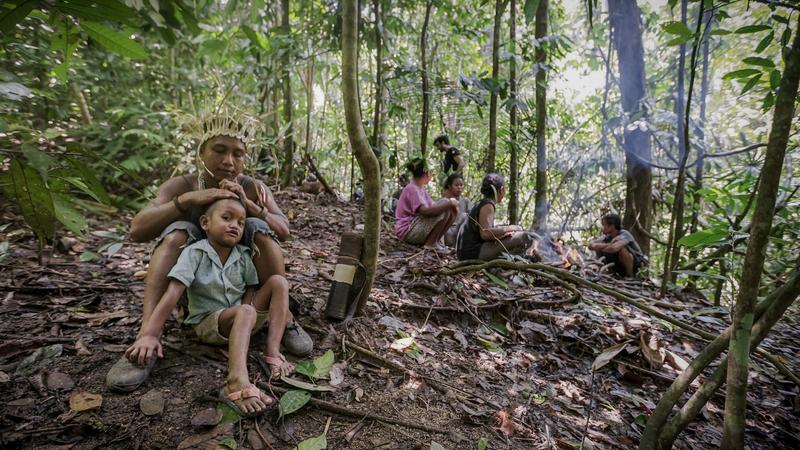
The world's most trafficked mammal is a solitary anteater resembling an artichoke: the pangolin. Prized for its scales, particularly for traditional medicine in China, this quiet animal is at the centre of a sophisticated, multi-million-dollar supply chain across Africa and Asia, run by networks of criminal syndicates.
In a simple bamboo hut in a small clearing among towering rainforest trees, we share a meal of forest squirrel and tapioca with our hosts. They are from the indigenous Temiar community, whose traditional land sits on the northern edges of Peninsular Malaysia’s central forest spine. They are in high spirits, while we are aching with fatigue, because we have just spent half a day hunting and foraging with them.
When they showed us the squirrel that would later become our dinner, dead from a poisoned blowpipe dart, we were told not to laugh or joke. No reason was given, but it struck us as a sign of respect for the utility of the forest and its creatures.
Our conversations with indigenous communities confirm that the demand for pangolins has penetrated even into villages deep in the Malaysian jungle. “In the past, if we felt like eating pangolins, then we will go hunt for it,” said one indigenous hunter. “It’s not like we hunt and eat it all the time.”
Among the Temiars, pangolins are said to ward off elephants, an ability they acquired from an incident in which a pangolin wrapped itself around an elephant’s trunk and refused to let go, killing the elephant. Since then, the Temiars say, elephants avoid pangolins. Other indigenous groups are known to link the pangolin to the human foetus, as they believe it is a reincarnation of the human placenta.
The pangolin is an animal so rich in mythology that some villagers we spoke to tell of oral traditions that prohibit its hunting and eating. The hunters we spoke to say they have recently stopped hunting them, despite the loss in possible revenue, citing objections from village elders.
“When there are outsiders who want to buy it from us, that’s when we hunt it and we sell it. If there are no buyers, we won’t hunt it,” said the hunter.
Although these communities mostly live off the forest and have only tenuous links to the mainstream cash economy, the pangolin trade is still influenced by market forces. Different buyers offer the hunters different prices, and it changes by season. Hunters simply try to sell to the highest bidder.
“In the past, prices were around 300 ringgit per kilogram,” said the hunter. “Sometimes, up to 350 ringgit. Even up to 600 ringgit.” That highest price is about $143.
“But now, it fetches around 100 ringgit per kilogram, maybe 150 or 50 ringgit per kilogram. If we hear the price is 50 ringgit per kilogram, we won’t bother. But if we hear the price is 300 ringgit per kilogram, that’s when we go hunting.”
“This demand for pangolins from China first sucked up all the pangolins in China, so that it is now commercially extinct there,” said Dr Chong Ju Lian, a lecturer at Universiti Terengganu Malaysia, who has been involved in pangolin research since 2009.
“Then around 2006 or 2007, we noticed a spike in pangolin seizures in Malaysia. There were a lot of news reports of pangolin smugglers being intercepted by authorities, and bear in mind that the majority of smuggling goes undetected.”
She has found that the demand for pangolins has shifted to African countries, something she and other researchers foresaw when they successfully lobbied for all eight pangolin species to be reclassified under Appendix I in the International Union of Conservation and Nature’s (IUCN) trade list, a move that bars all commercial trade of pangolins.
“That’s why we insisted on including the four African species in the reclassification, even though they were not considered critically endangered back then.”
Based on her conversations with indigenous communities, Dr Chong said she thought that poaching has brought Malaysia’s pangolin population to the brink of extinction.
“Some indigenous hunters say they have not seen a pangolin in three years,” she said. “The middleman is still willing to buy, but pangolin hunting is just not as attractive now as it used to be, simply because it is so difficult to find one.”
The Global Environmental Reporting Collective, formed in early 2019, chose the pangolin trade as its first focus for in-depth investigation. More than 30 journalists from 14 newsrooms reported in Africa and Asia, conducting dozens of exclusive interviews and even going undercover. The results are being published here as “The Pangolin Reports: Trafficked to Extinction.
用行動支持報導者
獨立的精神,是自由思想的條件。獨立的媒體,才能守護公共領域,讓自由的討論和真相浮現。
在艱困的媒體環境,《報導者》堅持以非營利組織的模式投入公共領域的調查與深度報導。我們透過讀者的贊助支持來營運,不仰賴商業廣告置入,在獨立自主的前提下,穿梭在各項重要公共議題中。
你的支持能幫助《報導者》持續追蹤國內外新聞事件的真相,邀請你加入 3 種支持方案,和我們一起推動這場媒體小革命。

